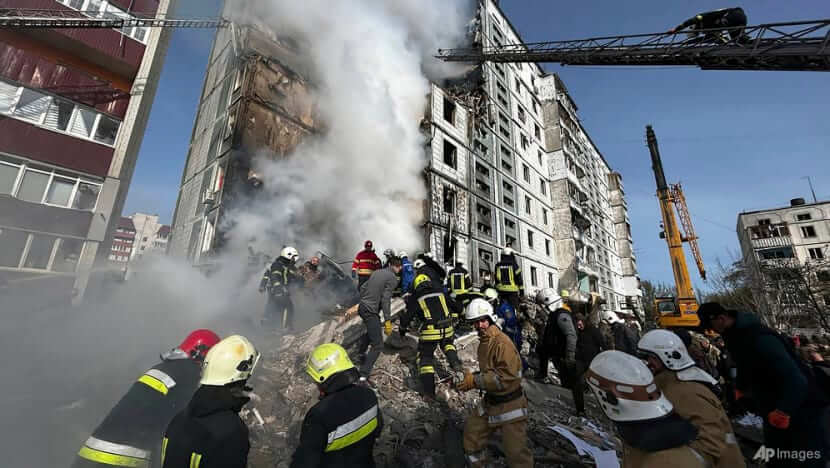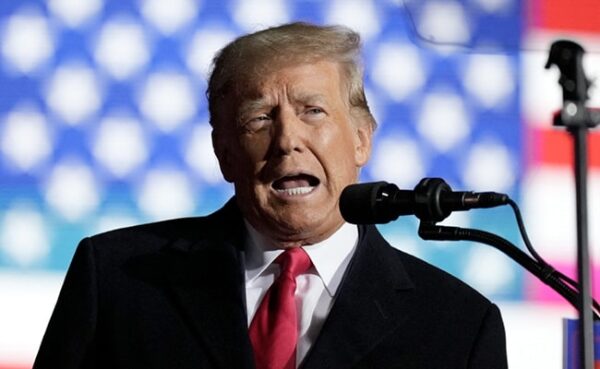The futuristic Saudi megacity is to display two skyscrapers that spread across the desert plot and mountain terrain, according to the latest disclosure of the project by the Royal De facto rulers.
The parallel structure of the mirror wrapped in a mirror extends more than 170 kilometers (more than 100 miles), known collectively as a line, forming the heart of the Megacity of the Red Sea Neom, a crown board of the crown mohammed bin salman to diversify the State oil of Gulf Bay Gulf Bay Gulf Gulf Bay Economy Gulf Bay State that depends on.
First announced in 2017, Neom consistently raised eyebrows for proposals to develop such as flight taxis and robot servants, even when architects and economists questioned their eligibility.
In a presentation on Monday night, Prince Mohammed made a more ambitious vision sketch, describing the free Utopia of the car which will become the most livable Planet City “so far”.
Analysts note, that the plan for Neom has changed direction for many years, triggering doubts about whether the line will come true.
Neom, biotek and digital hubs are spread at 26,500 square kilometers (10,000 square miles), have been referred to as regional “valleys”.
Now is a vehicle to reorganize urban life with footprints of only 34 square kilometers, and discuss what Prince Mohammed described as “the ability to live and environmental crisis”.
This concept has changed so much from the initial conception that sometimes it is difficult to determine its direction: Scribute, improve, or make an aggressive turn to the side,” said Robert Mogielnicki from the Arab Gulf State Institute in Washington.
The previous officials said the Neom population would reach one million, but Prince Mohammed said the number would really reach 1.2 million in 2030 before rising to nine million in 2045.
The stunning total is part of the expected national population explosion which according to Prince Mohammed will be needed to make Saudi Arabia, the largest crude oil exporter in the world, an economic power plant.
The destination for 2030 is to have 50 million people – half Saudi and half of the foreigners – living in the kingdom, up from around 34 million today.
That is the main goal of building Neom, to increase the capacity of Saudi Arabia, get more citizens and more people in Saudi Arabia. And because we do it from nothing, why do we have to copy normal cities?”
This site will be powered by 100 percent of renewable energy and displays “Micro Climate with Year with Natural Ventilation”, a promotional video released Monday said.
Past environmental promises by the kingdom, such as oaths to achieve clean -up carbon emissions in 2060, have triggered skepticism from environmental lovers.
Neom is well positioned to utilize solar and wind energy, and plans are also ongoing for the city to host the largest green hydrogen factory in the world, said Torbjorn Soltvedt of the Risk Maplecroft Risk Intelligence Company.
But the overall feasibility of Neom is still unclear considering the scale and cost of projects that have never happened before,” he said.
With a width of only 200 meters (yard), this line is intended to be the answer to Saudi Arabia for uncontrolled and wasteful urban sprawls, coating houses, schools and parks above each other in the term planner “Zero Gravity Urbanism”.
Residents will have “all daily needs” that can be achieved within five minutes, while also have access to other facilities such as outdoor ski facilities and “high -speed rails with transit end to 20 minutes”, according to A statement.
Although Neom will operate based on his own establishment law, which is still prepared, Saudi officials say they do not have plans to put aside the prohibition of royal alcohol.
The airport has been operating in Neom, and the authorities announced that in May it will begin to receive regular flights from Dubai, but it is unclear whether the large -massive development of the megacity itself has begun.
The “first phase” of the project, lasting until 2030, will cost 1.2 trillion Saudi Riyals (around $ 319 billion), PR




